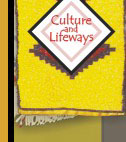 Heritage Community Foundation Presents
Heritage Community Foundation PresentsAlberta Online Encyclopedia
 |
 |
||
|
|
 |
Home | About Us | Contact Us | Partners | Sitemap |
|
|
|
 |
||
   |
|||
|
European Influences on Métis Food Europeans brought tools and utensils made of various metals, which were very popular when trading with Native and Métis women. Sewing needles, kettles, pots, and pans made their way into many Métis homes. Prior to Europeans' arrival, Natives used horns or wood for spoons and containers. Bones were used as needles, scrapers and awls. Europeans also introduced alcohol to Native people—and not usually given as a sophisticated drink of wine to be savoured with a good meal—but given as a work bonus or given in trade. In particular, whiskey and rum were used as enticements. Some forts, such as Fort Edmonton, had ice-houses where fresh meat could be stored. With the decline of the fur trade and the near extinction of buffalo, farming became a stressed vocation. Until the European introduction of domesticated animals such as cattle, poultry, pigs, sheep and goats — Native food was taken from the wild. Hoarding food was not typical of the Métis. Métis almost always shared extra wild meat and staple foods, such as flour, with their kin and community members. Farms could produce grain to make flour which in turn was made into pastry and bread. Products from domesticated animals were turned into butter, milk, and cheese. Produce from vegetable gardens could be added to a simmering pot of soup. A big pot of tea, a large hearty bowl of soup, and fresh oven-baked bannock were ever ready in most traditional Métis homes. Large families and an open door to visitors made a large pot of soup popular for sharing. If an unexpected guest arrived, extras were simply added to the big pot. A pot of soup, especially during lean times, could be stretched out by adding fish, barley, root vegetables, peas, and soup bones. Besides providing comfort, a single large pot of soup, brimming with a variety of wholesome foods, carried a powerful wallop of nutritional and healing properties. In the summer, strawberries, raspberries, saskatoons and cranberries were picked. Berries could be eaten fresh, dried and stored in a bag, or added to pemmican. If glass jars were available, jam was prepared with whole cranberries (with pulverized berry stones included) and either poplar or birch sap was added for sugary flavour. To this day, Métis soup has continued to be popular, with generations passing down family recipes, not necessarily in measured amounts but in suggested combinations. Some examples of contemporary Métis foods include custard puddings, baked and fried bannock, Métis soup, meatballs, meat pies pea soup, and bean soup. |
Native and Métis Medicinal Foods European Influences on Métis Food |
||
|
|
|||
 |
 |
 |
 |
For more on Métis Alberta, visit Peel’s Prairie Provinces.